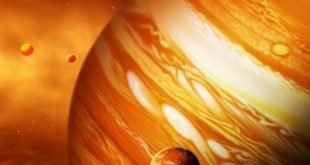 Now to measure mental abilities sufficient to use a small mathematical formula.
Now to measure mental abilities sufficient to use a small mathematical formula.
According to Dr. Joe Tina, a leading neuroscientist at the University of Augusta in Georgia, the key to intelligence lies in one simple, unassuming equation: N = 2^i – 1. The theory of connectedness Tina is the description of how our billions of neurons flexibly meet not only the educational knowledge, but also the crystallization of the concepts studied and extrapolating ideas, and reasoning about things that we haven’t experienced.
“Intellect in its basis lies in the uncertainty and endless possibilities,” says Tin.
If you incredulously stared at the equation, you are not alone. The theory seems so commonplace that it is easy to dismiss as yet another attempt to unravel the neural code is only a theory, without evidence.
But in the new work, published in Frontiers in Systems Neuroscience, Tzin and his team tested the theory in a number of experiments with animals and found out that it runs for seven different areas of the brain, identifying the basic behavioral functions such as feeding, memory, and fear.
And simplicity is not the most shocking aspect of the idea Tina.
What is even more controversial, the theory fits together face to face with the fundamental doctrine in neuroscience: the cells that are activated together, and bind.
This age-old idea is so widely accepted that it can be considered dogma. She says that when the neurons are activated together, while coding an object, a concept or a memory, their relationship strengthened. If any part of this ensemble is activated in the future, it raises memory full memory. In other words, the cells are activated randomly, but connected by chance in the learning process.
At a fundamental level weave of the brain are deeply rooted.
According to Tina, this theory makes sense both from the point of view of the cells and calculations, but “beautifully blurry”.
For its part, Tsen believes that the brain works on the basis of pre-programmed and saved networks. These networks do not learn; instead, they consist of a pre-established neural networks connected in accordance with a simple mathematical principle.
In other words, at a fundamental level weave of the brain are deeply rooted — these motifs are set by genetics, lie deep at the heart of our ability to extract features, to find the relationship, to extract abstract knowledge and, ultimately, to talk.
“In my opinion, Joe Tsin offers an interesting idea about the principles of brain organization, and it is confirmed by the intriguing and compelling proof,” says Dr. Thomas Sudhof, a neuroscientist at Stanford University and winner of the Nobel prize in physiology or medicine 2013. “This idea worth checking out.”
The theory of connectedness
Tin firsthand experience with the research of intelligence.
Working at Princeton University 17 years ago, Tin was among the first who by genetic engineering have created a “smart mouse”, which is faster studied longer remembered and solved complex problems in the maze faster than her conventional brethren.
The creation of the mouse, “Arc”, named after the brilliant teenager in the TV series Doogie howser, led scientists to the idea: if changing just a few genes can dramatically change cognitive abilities, regardless of learning, perhaps these studies addressed the fundamental weave of the brain.
Several years later, studying how the mouse shape different types of terrible memories, Tsin found that cells in the hippocampus — the memory center of the brain — the varied nature of the activation.
Some cells are activated in response to any type of terrible events — air explosion from behind (simulated attack owls), a shake in the manner of an earthquake or a sudden free fall. Others have answered the subset of events, such as shaking and falling, but not air burst. Others were even more picky, activated only in response to contextual events such as the earthquake in the blue but not in the red room.
When mapping the neurons formed clusters from the specific to the General.
“Grain of this idea led to the theory of connectedness,” says Tin.
The core of this theory is based on the formula N = 2^i – 1, mathematical logic weave in the second degree, which illustrates how neural networks are moving from the specific to the General.
Each neural network is called a “clique”. Simple click enables the neuron receiving a specific input. Contrary to the widespread view that individual neurons are the basic computational unit of the brain, Tzin said that this role needs to take on a neural clusters.
“This allows the system to avoid catastrophic failure in the event of loss of one neuron,” explains Tsen.
These simple neural clique then infused in large networks, called functional connectivity motifs (FCM) in accordance with N = 2^i – 1. In this formula, N is the number of neural cliques that are connected in various ways, and i — the types of information they receive.
For example, let’s say you have an animal that wants food and females (i = 2). Therefore, the neural clique (N = 2 x 2 — 1) to fully meet his needs.
“According to this equation, each FCM must consist of the full set of neural cliques that extract and process different inputs of a combinatorial way,” says Tin.
By combining these circuits, the brain can create new ideas and understanding of the world, says Tzin. In some ways it’s kind of disassembly and Assembly of LEGO bricks in all new structures. For the animal, which deals with more complex inputs, each neural clique handles different aspects of incoming information. Together they intertwine to form larger units, capable of processing input data of a higher level.
These units are pre-programmed, not taught, and, according to Tina, are the basic computational building blocks of the brain.
Thus, the brain can take information and turn combination of individual elements, such as “earthquake” and “landscape” in a more General knowledge, such as “natural disasters”.
Because neural networks work that way, they form patterns which can to find common patterns in different varieties of information. Combining these circuits, the brain can build new ideas and concepts about the world, says Tzin. In some ways it is a flexible combination of LEGO bricks with the formation of new structures.
Test of the theory
If the brain really works by the formula N = 2^i — 1, this theory should be performed for several types of cognitive tasks. To test the idea, scientists provided mice with arrays of electrodes to neural listen to their conversations.
In one experiment, scientists gave the animal a combination of four different types of food — standard food, sugar granules, drops rice and skim milk. The theory is that mice must have 15 (N = 2^4 — 1) neural cliques, in order to fully represent every type of food and their different combinations.
Here’s what they found out.
When recording the activity of the amygdala, a brain area that processes emotions, some neurons responded to all kinds of food, others were more selective. Gathering in clusters to further activity, they formed 15 click — exactly as predicted by the theory.
In another experiment, aimed at a start of fear, the animals were subjected to four scary scenarios: a sudden blast of air, the earthquake, the sudden free-fall or shock in the feet. At this time, records from the region of the cerebral cortex that is responsible for fear, too, has identified 15 cell click.
Similar results were obtained in other brain areas — a total of seven different areas. A notable exception was revealed to the dopamine neurons in the chain of rewards, which tend to be activated in a binary manner, coding concepts such as good or bad.
This suggests that the equation works for many cognitive mechanisms, if not all.
So they moved on to test whether this algorithm is configured to advance the evolution and development rather than learns. They repeated the above experiments but with a type of genetically modified mice which lacked NMDA receptor — main switch required for network changes caused by the training.
Surprisingly, this mathematical rule to run even after the removal of genes.
Given that neurons in mice without NMDA receptors can not “be activated together and weave together,” the study authors concluded that the theory of connectedness is fundamentally different from our current concepts of plasticity: it is not acquired but is congenital.
What now?
Tzin believes that this theory can be immediately used for reviewing data on how memories are physically stored in the brain, and theoretically, it can shed light on how diseases and symptoms of old age affect the brain at the cellular level.
Thanks to a well-described algorithm, ready to test, the theory can also inspire neuromorphic computing, to teach artificial schemes to extract knowledge and be flexible in their behavior.
© 2017 – 2019, paradox. All rights reserved.




